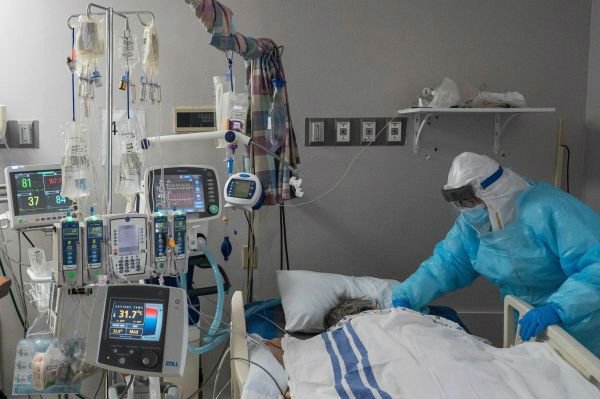Reference News Network reported on December 11 that federal data show that more than one-third of Americans live in areas where hospitals seriously lack ICU beds, showing the latest details of the hospital crisis in the deadliest week of the coronavirus epidemic. A shortage of hospital beds may prevent patients from receiving the care they need, and the mortality rate may increase again.
Beds are nearly saturated
In El Paso, hospitals reported that only 13 of the 400 intensive care (ICU) beds were spared last week. In Fargo, North Dakota, there are only three spare beds. In Albuquerque, the number of free beds is zero.
According to the New York Times analysis of hospital reports and data released by the Department of Health and Human Services, as of last week, hospitals with services covering more than 100 million Americans, the total proportion of spare ICU beds is less than 15%.
In many areas, the situation is even worse: in large areas across the Midwest, South and Southwest, one in 10 Americans lives in areas where ICU beds are either fully saturated or less than 5%. At this level, experts say it is impossible to maintain the existing standards of care for the most serious patients.
“There’s only so much that our frontline health care can offer, especially when you talk about real agricultural counties that are currently being hit hard by COVID-19,” said Beth Brauer, executive director of the Center for Civic Impact at Johns Hopkins University.
She said that the sharp increase in COVID-19 patients will overwhelm small hospitals. She said: “The disease is developing very fast and may worsen rapidly. If you don’t have the relevant treatment capacity, it means that some patients will die.
New data released by the federal government on the 7th shows that in some areas such as Texas and Michigan, the proportion of severe coronavirus patients is approaching the level of New York City at the peak of the spring epidemic.
Last week, California issued the following order: residents must stay at home in areas where more than 85% of ICU beds in hospitals are occupied, the report said. In New Mexico, where ICU beds are already full statewide, Gov. Luhan Grisham expects the state to announce soon that hospitals can allocate medical resources according to who is most likely to survive.
The consequences have emerged.
Doctors and researchers say that the shortage of ICU beds has had serious consequences.
North Dakota reportedly has the highest infection rate per capita in the United States this fall, while the state’s spare ICU beds in early November sometimes fell to single digits. In the small town of Mynot, the local Trinity Health Hospital has dedicated the entire sixth floor of the hospital building to serving COVID-19 patients.
Other hospitals in North Dakota usually accept transfer patients to help ease the burden, but when the head of healthcare workers, Dr. Jeffrey Suther, sought help, he found that other hospitals were also full.
At that time, patients kept pouring in and crowded his emergency room. He said, “They have nowhere to go.”
The report pointed out that the survival rate of COVID-19 patients has increased as doctors understand effective treatment methods. However, shortages in hospital beds may reverse these gains, and the mortality rate is likely to increase again because patients do not have access to the required care.
“When resources are severely confined, already burnout health workers are forced to make heartbreaking decisions about who should receive care,” said Thomas Tsai, a public health policy expert at Harvard University.
In California, hospital staff are preparing for challenges in the coming months as hospital beds are running out and much of the state will be in lockdown measures. Currently, more than 10,000 COVID-19 patients in the state are hospitalized, which is more than 70% higher than two weeks ago.
According to the website of the New York Times on December 10, the United States has crossed another serious milestone – more than 3,000 people have died of COVID-19 in a single day.
The report said that just a week after the last time the United States broke the one-day record for coronavirus deaths, it set another record on the 9th, with at least 3,011 deaths reported nationwide. Last week, the record was 2,885 single-day coronavirus deaths.
Meanwhile, the United States is accelerating towards another alarming total: 300,000 cumulative deaths. According to the New York Times, at least 288,000 people have died of the coronavirus in the United States.



